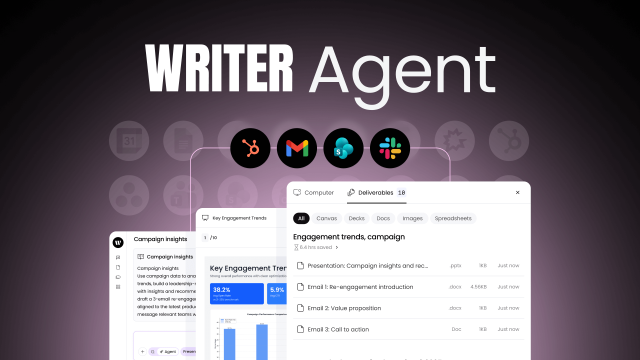Innovation
– 5 min read
WRITER connectors: Governed agent access across enterprise systems
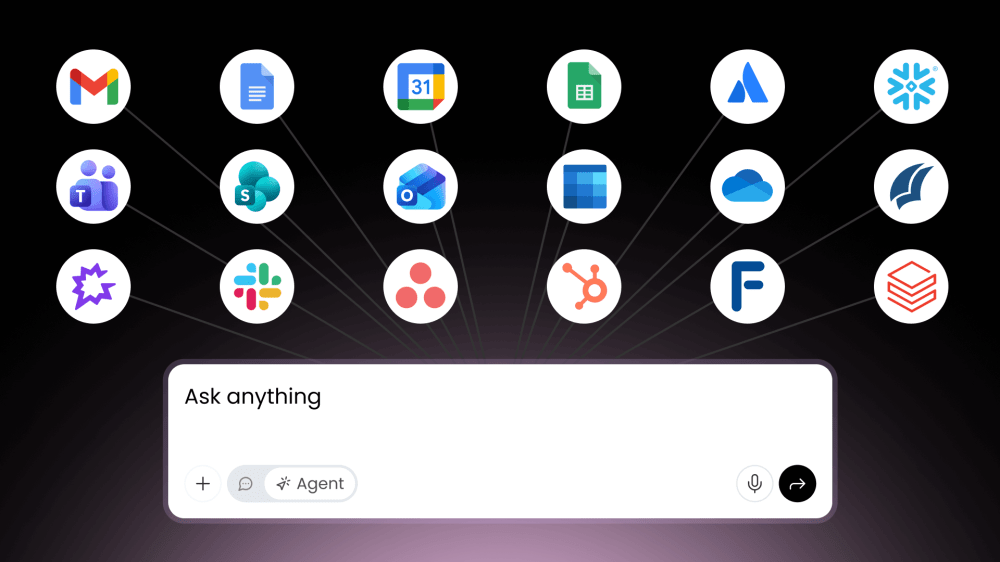
For AI to play a meaningful role in enterprise work, agents need access to the same platforms, data and tools as the workforce. Most organizations run on a distributed stack across CRMs, collaboration suites, data warehouses, and knowledge management systems, which forces employees to shuttle information between tools and prompt windows. Enterprises need a way to extend this access to agents while maintaining existing identity and permissions.
WRITER connectors, now in beta and powered by connector controls and the WRITER MCP gateway, give the WRITER Agent governed access to the systems where enterprise work actually happens. This spans Microsoft 365 and Google Workspace, along with HubSpot, Gong, PitchBook, and FactSet. Additional connectors, including Asana, Atlassian, Snowflake, and Databricks, are on the way.
With this foundation, agents move from generating isolated answers to executing work across platforms. This unlocks cross-system insights that were previously invisible, democratizes sophisticated analytics for non-technical users, and enables entirely new workflows that manual coordination couldn’t achieve.
Retrieve, analyze, and act with connector tools
WRITER connectors offer a broad set of read, write, and delete capabilities across the enterprise stack. Teams can rely on agents to pull context from the right system, interpret it, and act, with controls that scale precisely across every tool and interaction.
Here are three examples of real-world workflows that illustrate this shift:

Portfolio monitoring
WRITER Agent draws performance and holdings data from Snowflake or Databricks, enriches it with public and private market signals from FactSet and PitchBook, and produces heatmaps and risk alerts saved back into SharePoint. The same workflow can extend into Slack or Confluence when PMs want automated updates or research notes.
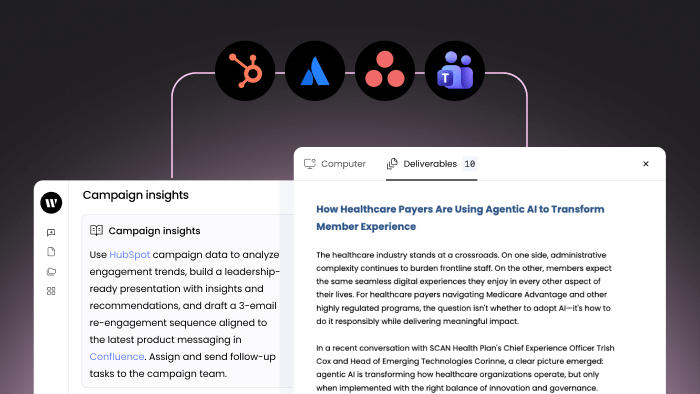
Campaign insights
WRITER Agent retrieves campaign performance from HubSpot, analyzes engagement trends, synthesizes insights in a presentation with visualized charts and graphs, uses latest product information sitting in docs on platforms like Confluence or SharePoint to write new campaign emails, then assigns follow up tasks and notifies relevant teams in project management and communication tools like Asana and Microsoft Teams
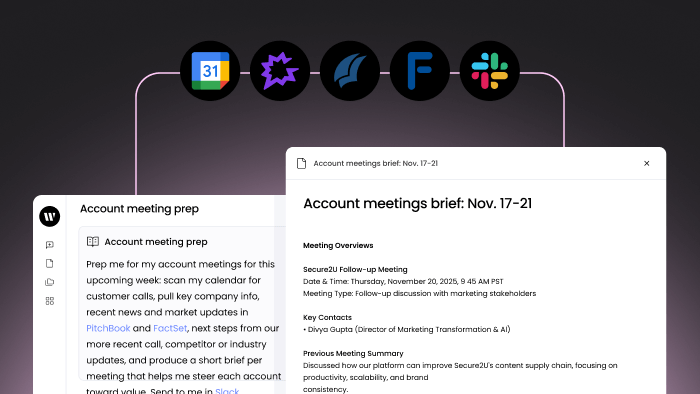
Account meeting preparation
WRITER Agent scans your upcoming calendar events through Google Calendar, pulls company and market context from sources like Gong, PitchBook, or FactSet, and surfaces recent activity from Slack to assemble clear, actionable briefs for each meeting.
Enterprise controls for scale: WRITER MCP gateway and platform controls
Enterprises operate at a scale where thousands of users, agents, and tools all carry their own identities, permissions, and roles. Coordinating this many-to-many environment requires more than offering agents a tool use protocol through Model Context Protocol (MCP). In the same way that core business systems rely on RBAC to regulate human access, enterprises need a clear operational layer that defines the knowledge, capabilities, and actions available to agents across the stack.
WRITER provides this through a combination of platform controls and an infrastructure layer that sits between agents and the systems they interact with. The platform gives admins and end users the surfaces to control connector access, while the underlying runtime layer validates that every agent-tool interaction follows agent and system access rules and permissions.
The WRITER MCP gateway provides automated security enforcement on every agent-tool interaction. Before any action executes, it validates agent identity against your IdP, checks connector and agent-level permissions, screens for malformed requests, and verifies response integrity. This four-layer validation runs consistently across all connectors, ensuring agents operate within the same security boundaries that govern human users. By routing all connector traffic through this runtime layer, WRITER provides consistent enforcement without requiring manual oversight.
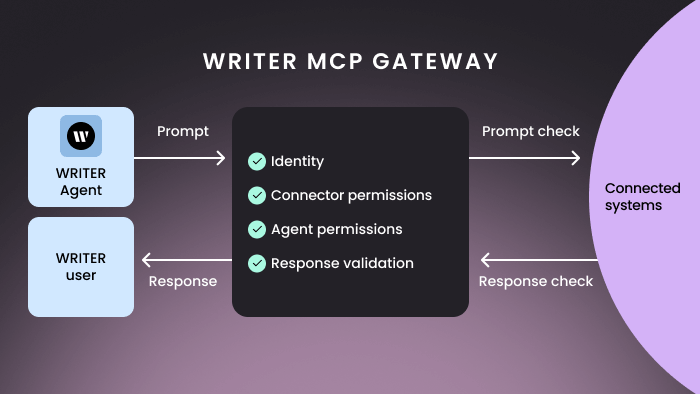
On the platform side, WRITER gives admins centralized control surfaces to manage connectors, define allowed operations, manage OAuth at the org or user level, and review usage through session logs. Business users get workflow- and session-level controls that restrict which connectors an agent can use for a given task, ensuring agents access only what’s relevant while still operating within IT’s broader identity and permission framework.
A foundation for more autonomous enterprise agents
Connectors are one part of a broader model for making agents independently operable inside businesses. Combined with Knowledge Graph data sources and expanding agent capabilities, enterprises gain a controlled path toward agents capable of more complex, coordinated, and outcome-driven work.
As model reasoning and autonomy improve, WRITER’s governance stack — connectors, platform controls, and the MCP gateway — remains the foundation for identity-aligned, permission-aware execution across systems.
“Interoperability is key — the real revolution is what happens when agents can reason across structured, semi-structured, and unstructured data,” says Timur Yarnall, Director of AI Product Partnerships at Snowflake. “The power is in giving every user the ability to talk to their data directly and drive real outcomes.”
The first set of WRITER connectors are available today in beta. Admins can get started by enabling WRITER connectors in the Help Center.
IT and security teams can read more about the WRITER MCP gateway in our developer documents.





